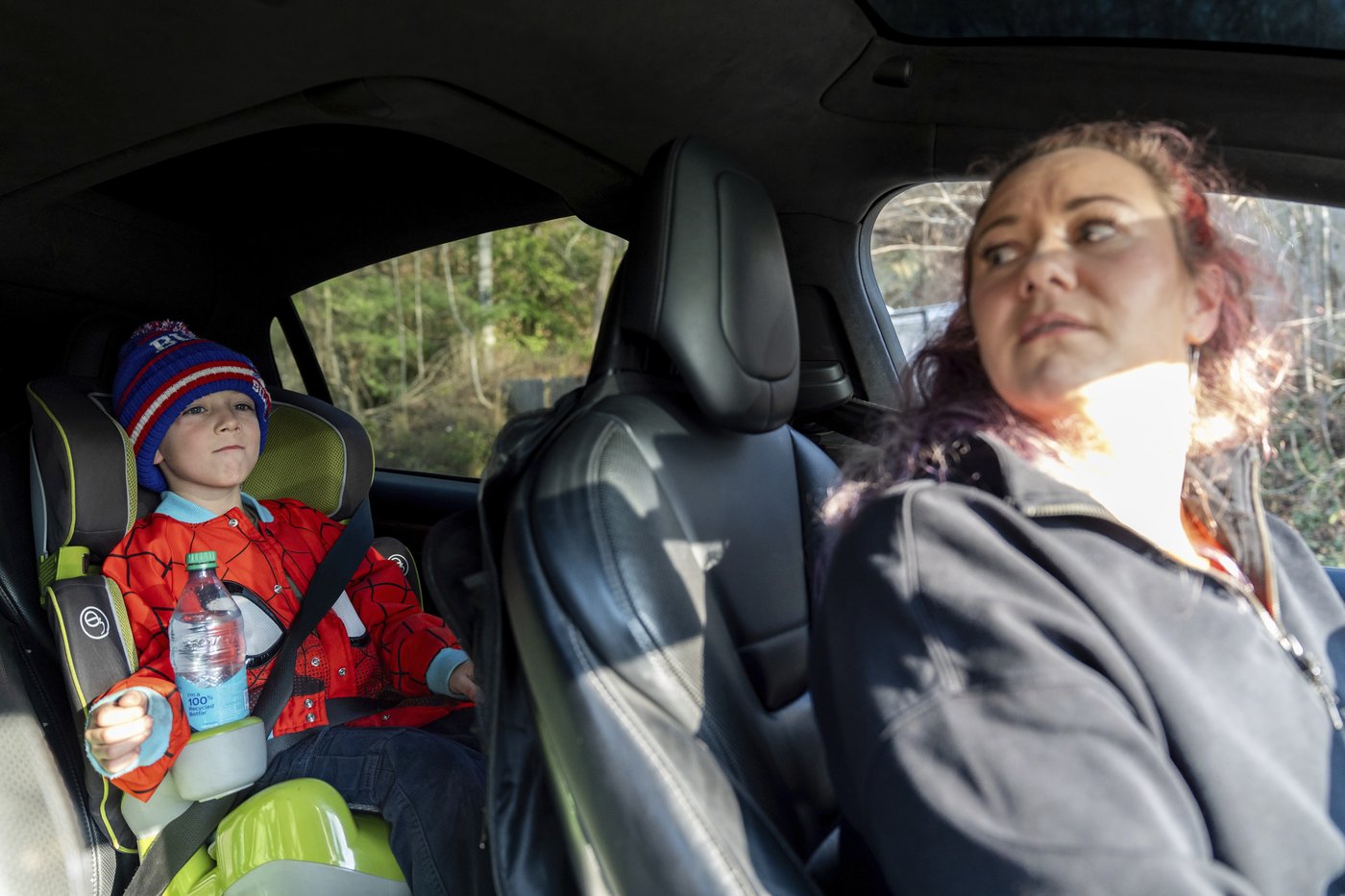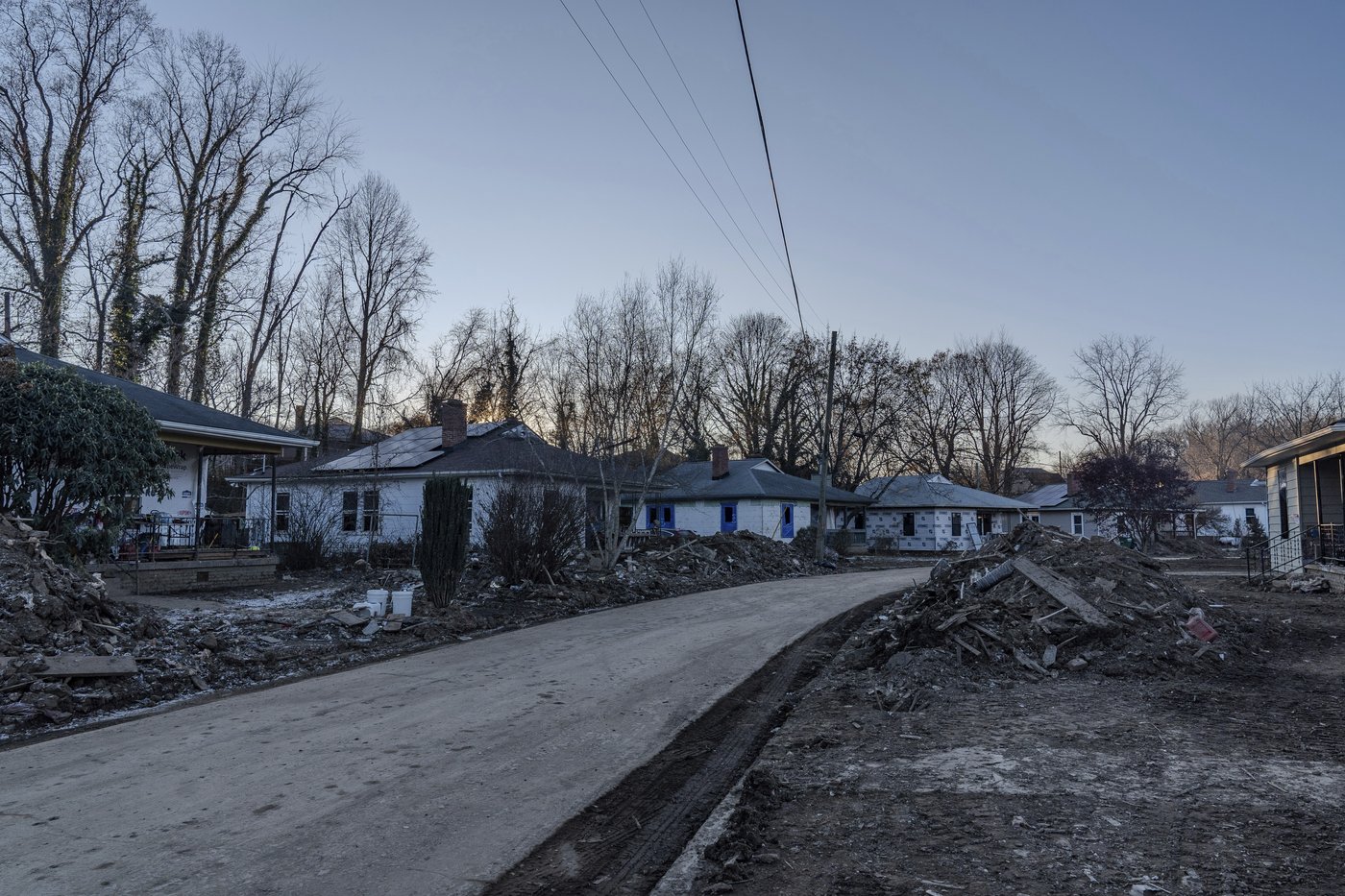
Hurricane Helene displaced thousands of students. Some struggled to get back on track with school
SWANNANOA, N.C. (AP) — When 12-year-old Natalie Briggs visited the ruins of her home after Hurricane Helene, she had to tightrope across a wooden beam to reach what was once her bedroom.
Knots of electrical wires were draped inside the skeleton of the house. Months after the storm, light filtered through breaks in the tarps over the windows. “All I could think of was, ‘This isn’t my house,’” said Natalie, who had been staying in her grandparents’ basement.
At school, Natalie sometimes had panic attacks when she thought of her ruined home in Swannanoa.
“There were some points where I just didn’t want people to talk to me about the house — or just, like, talk to me at all,” Natalie said.
Thousands of students across western North Carolina lost their homes a year ago when Helene hit with some of the most vicious floods, landslides and wind ever seen in the state’s Appalachian region, once considered a “climate haven.” Across the state, more than 2,500 students were identified as homeless as a direct result of Helene, according to state data obtained by The Associated Press.
While storm debris has been mostly cleared away, the impact of the displacement lingers for the region’s children. Schools reopened long before many students returned to their homes, and their learning and well-being have yet to recover.
The phenomenon is increasingly common as natural disasters disrupt U.S. communities more frequently and with more ferocity.
___
The Associated Press is collaborating with Blue Ridge Public Radio, Honolulu Civil Beat, CalMatters and Centro de Periodismo Investigativo in Puerto Rico to examine how school communities are recovering from the disruption of natural disasters.
___
In the North Carolina mountains, the challenge of recovery is especially acute. After all, many families in rural, low-income areas already deal with challenges such as food insecurity and rent affordability, said Cassandra Davis, a University of North Carolina at Chapel Hill public policy professor.
“I would almost argue that they don’t get the opportunity to recover,” Davis said.
Finding stable housing became all-consuming
After Helene flooded her rental home in Black Mountain, Bonnie Christine Goggins-Jones and her two teenage grandchildren had to leave behind nearly all their belongings.
“They lost their bed, clothes, shoes, their book bag,” she said.
The family lived in a motel, a leaky donated camper and another camper before moving into a new apartment in June.
Goggins-Jones, a school bus aide at Asheville City Schools, struggled to heat the camper during winter. Her grandchildren kept going to school, but it wasn’t top of mind.
The area around Asheville, western North Carolina’s largest city, still has a significant housing shortage a year after the storm.
The family of America Sanchez Chavez, 11, had to split up to find housing. Helene left their trailer home in Swannanoa uninhabitable, and money from the Federal Emergency Management Agency wasn’t enough to cover the renovations.
America and some relatives went to stay at her grandmother’s apartment, while her older brother lived at a friend’s house. Eventually, America moved with her mother to a room at a Black Mountain hotel where she works.
America said she is still frightened by rain or thunder.
“At one point when the rain actually got, like, pretty bad … I did get scared for a while,” she said.
Helene damaged more than 73,000 homes, knocking out electricity and water for weeks if not months. The destruction of local infrastructure also closed schools for large stretches of time, and a barrage of snow days exacerbated the time out of class even more. In rural Yancey County, which has approximately 18,000 residents, students missed more than two months of school last year.
Displaced students spread across North Carolina
After natural disasters, it’s common to see a surge in students living in unstable, temporary arrangements, such as sleeping on a couch, staying in a shelter, or doubling up with another family, according to research from UCLA’s Center for the Transformation of Schools. Those arrangements qualify students as homeless under federal law.
In Puerto Rico, more than 6,700 students were identified as homeless in Hurricane Maria’s aftermath during the 2017-2018 school year, the study found. Hawaii saw a 59% increase in its homeless student population following the 2023 Maui wildfires.
In Helene’s aftermath, student homelessness spiked in several hard-hit counties, according to AP’s analysis of data from the North Carolina Homeless Education Program.
Yancey County saw the region’s highest percentage increase. The number of homeless students went from 21 in the 2023-2024 school year to 112 last school year. All but 15 were homeless due to Helene.
Some students enrolled in other school systems, at least temporarily. Others never returned.
Terri Dolan of Swannanoa sent her two young children to stay with her parents in Charlotte ahead of the storm. After seeing the extent of the devastation, Dolan had them enroll in school there. They stayed over a month before returning home.
“My job is to make money for our family and their job is to go to school,’” Dolan says she’d always told her kids. “Just because the school wasn’t open here, I felt like they needed to go to school and do their job.”
Some districts receive federal money for services such as transporting homeless students to their usual school buildings and providing tutoring under the McKinney-Vento Homeless Assistance Act. But districts must apply in a competitive process, and they can’t request more money immediately after a natural disaster until the next application cycle. Many miss out on McKinney-Vento funding entirely.
Helene-impacted students made up at least a fifth of the homeless population in 16 counties, but only six counties received McKinney-Vento money last funding cycle. Nationally, only 1 in 5 school districts receives McKinney-Vento money due to limited funds, said Barbara Duffield, executive director of Schoolhouse Connection, a nonprofit that advocates for homeless students.
“If there’s a disaster, it’s going to involve districts that don’t get money from McKinney-Vento,” Duffield said.
Housing instability has a lasting impact
Gwendolyn Bode, a pre-law student at Appalachian State University, had to leave her mud-wrecked apartment complex after Helene. Told she couldn’t get campus housing, she found an Airbnb where she could stay at until her FEMA housing application went through, and then she moved into a hotel.
She felt like she was drowning as she tried to keep up with her classes and a part-time job.
“I can’t tell you what I learned,” Bode said. “I can’t even tell you when I went to class, because (mentally) I wasn’t there.” She found more stability after moving into an apartment for the spring semester.
For Natalie Briggs, now 13, the grief of losing almost everything, coupled with the tight quarters in her grandparents’ basement, sometimes got to her — and to her mother, Liz Barker. Barker said it felt like a “time with no rules” because there was so much to deal with on top of her job as a health care worker.
The circumstances sometimes led to friction. But Barker said overall, she and Natalie had “done pretty well” together.
“She’s been a little bit more loving since all of this happened,” Barker said, smiling at her daughter.
“I give her hugs and stuff,” Natalie said, “and I’ll tell her I love her, more than I did.”
___
The Associated Press’ education coverage receives financial support from multiple private foundations. AP is solely responsible for all content. Find AP’s standards for working with philanthropies, a list of supporters and funded coverage areas at AP.org.




Join the Conversation!
Want to share your thoughts, add context, or connect with others in your community?
You must be logged in to post a comment.

















